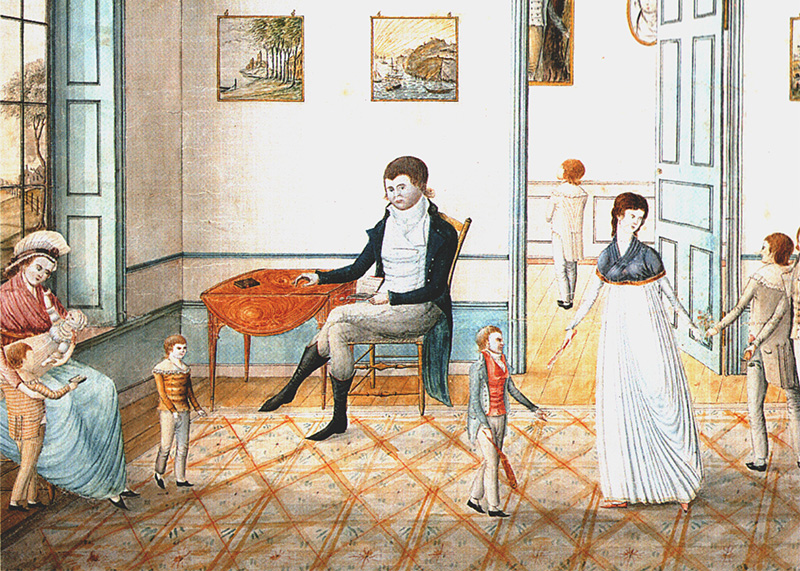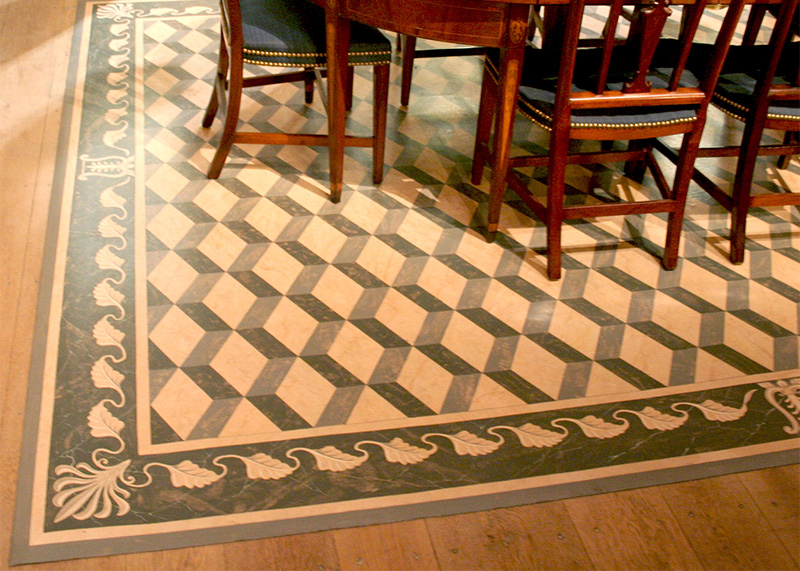|
About As textile designer Marianne Weiland has made much experience. The creation of fabrics is always combined with the fascinating handling colours. Different tones, contrasts and structures make interesting, diversified fabrics collections. This way I could live for many years in the weaving industry. 
At the end of the 90th I discovered in an American interior design book an article about "traditional floor cloths" which let rise my curiosity. An intensive process of development started. After passing the enormous hard-wearing at an institut for material testing the first collection was finishes and lanced in 2000. Since this time different applications have developped from the first idea: the canvas in XXXL-measures is manufactured to floor cloths for interior shops, to artifical veneers for cabinet-makers, to unusual room concepts for interior architects, to painted installations for art galleries and individual pieces of art for private homes. In my workshop in the Weserbergland the big canvas is painted according to the clients wishes. Then they are finished to the different products and shipped, rolled like carpets. More information under "service". With up-to-date techniques and painting material adapted to the needs of our time this old tradition continues.
History Painting canvas for floor cloths is a technique existing since the 17th century especially in the English speaking countries. The first written prove of a floor cloth is from 1722 and shows a bargain of Benjamin Powell: curtains for a bed and an oiled floor cloth to lie in front of the bed for 38 pounds. In the 18th century "floor cloth" meant an alternative to carpets, painted or raw made of wool, linen or cotton. During the 19th century the name "oil cloth" has established. The patterns mainly used were from floor tiles to imitate precious floors from elegant houses like marble. Basically hand painted or stencilled the design with wooden block prints developped, too. Beside the using as main carpet they were also used as protection from dust and crumbs - painted only with one colour - put under desks over woolen carpets. Until the middle of the 18th century the floor cloths were imported from England. That´s why a dealer advertised in the "South Carolina Gazette and Country Journal" of the 7th July 1767: "...some elegant floor cloths produced in London and just now arrived with the ship Mary....". After the American revolution the production was increasingly established in America and made by house and ship painters. In 1796 George Washington ordered a floor cloth for his retirement house in Mount Vernon and the inventory list of the White House of 1809 shows a green painted floor cloth for the southern dining room. The traditional painted and printed floor cloths were under the victims of the industrial Revolution of the 19th century. They were relieved by linoleum floors very rich patterned in the beginning. Today the art of floor cloths is made mainly in the USA by artists and craftsmen in small workshops. They keep alive a product having its original charme also today. Old traditional cloths today could be admired in museums. In the photo below it is one I found and took a picture of it in the Metropolitain Museum in New York.
„Nathan Hawely and Family“, Aquarell, W. Wilkie, 1801 |




